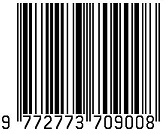Development of Plant-derived Banana Ripening Spray Using Kappetiya (Croton laccifer) Leaves
DOI:
https://doi.org/10.31357/ait.v4i01.7859Keywords:
ambon banana (Musa acuminata), banana ripening, calcium carbide, kappetiya (Croton laccifer), plant- derivedAbstract
Fruit ripening is a natural process that includes physiochemical changes such as tissue softening, aroma and flavor production, pigment changes, etc. Induced ripening is essential in commercial -scale banana cultivation and distribution to assure good texture, flavor, and uniform peel color. However, the use of potentially toxic ripening agents such as ethylene gas, acetylene gas (calcium carbide-based), and ethephon can affect fruit quality and health-related issues (such as induction of cancer, cardiovascular dysfunction, diabetic mellitus, etc.). In Sri Lanka, smoke induced by Kappetiya (Croton laccifer) leaves is traditionally used in banana ripening. This study focuses on the development of a non-toxic, Kappetiya-derived banana ripening spray (KBRS) using Kappetiya leaves. Kappetiya crude was extracted from Soxhlet extraction using two different solvents (pure ethyl acetate and distilled water). According to FTIR analysis, C-H/N-H (2918.10 cm-1, 2850.65 cm-1, C=O (1711.75 cm-1), NH2 (1375.18 cm-1), C-O (1239.08 cm-1), C-N (1044.88 cm-1) and C-X (608.65 cm-1, 523.33 cm-1) stretching were obtained from the crude extract using ethyl acetate. KBRS has been tested on "Ambon banana" (Musa acuminata) as a common commercially available variety that takes more time to ripen in comparison to other banana varieties. KBRS has been prepared in a concentration series of 4000 ppm, 2000 ppm, 1500 ppm, 1000 ppm, 500 ppm, and 100 ppm and applied to green Ambon bananas and tested for physical parameters (peel color, black marks, color of the stalk, texture). The green Ambon banana applied with 100 ppm, 500 ppm, and 1500 ppm KBRS took more time (4 to 10 days) to ripen, while the banana applied with 1000 ppm KBRS ripened within 2 days without any black marks on the peel or stalk of the banana. However, the green Ambon banana applied with 4000 ppm and 2000 ppm of KBRS had black marks on the peel and stalk, and the fruits had bad texture. Accordingly, it concludes that 1000 ppm Kappetiya-derived banana ripening spray is the best selection to ripen the Ambon banana variety in Sri Lanka.
Downloads
Published
How to Cite
License
Copyright (c) 2025 Tharusha D. Kariyawasam, Indika K. Hewavitharana

This work is licensed under a Creative Commons Attribution-NonCommercial-NoDerivatives 4.0 International License.
The Authors hold the copyright of their manuscripts, and all articles are circulated under the terms of the Creative Commons Attribution License, which permits unrestricted use, distribution, and reproduction in any medium, as long as that the original work is properly cited.
The use of general descriptive names, trade names, trademarks, and so forth in this publication, even if not specifically identified, does not imply that these names are not protected by the relevant laws and regulations. The authors are responsible for securing any permissions needed for the reuse of copyrighted materials included in the manuscript.




